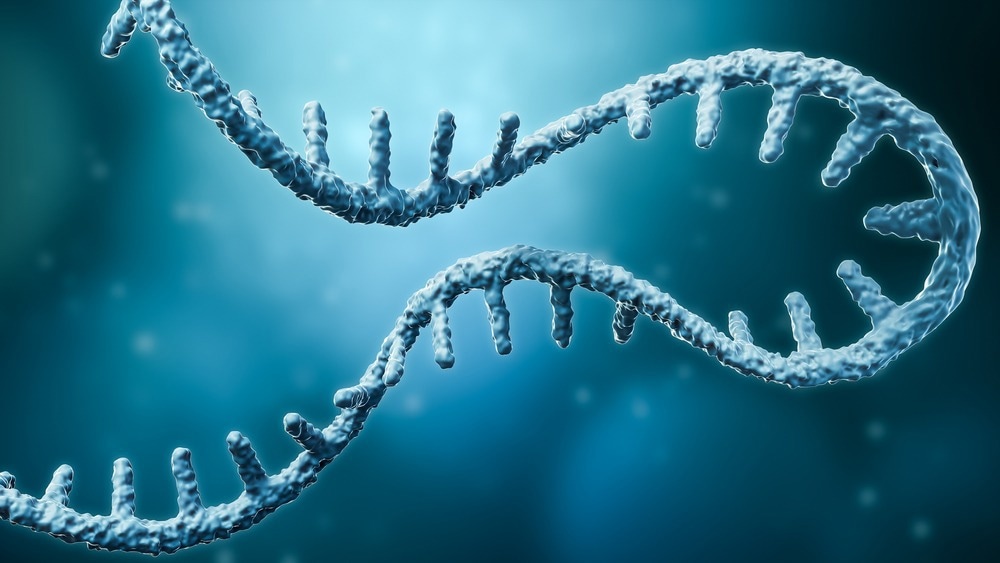In a recent study published in the journal Nature, researchers examined molecular-level differences in ribosomal translational fidelity between humans and bacteria.

Study: mRNA decoding in human is kinetically and structurally distinct from bacteria. Image Credit: MattL_Images/Shutterstock.com
Background
Protein synthesis by ribosomes requires decoding messenger ribonucleic acid (mRNA) nucleotide (nt) sequences.
The mechanisms that enable ribosomes to swiftly decode mRNA, utilizing various amino acid (aa)-transfer RNA (tRNA) substrates, define genomic codes and represent paradigms of detection and movements of biological molecules.
Data on the establishment of fidelity in translation and the age- and disease-associated modifications in fidelity decoding due to mutations and signaling pathway alterations in humans are limited. Existing knowledge on mRNA decoding is based on bacterial studies.
Investigating fidelity mechanisms in humans could aid in developing targeted therapeutics against viruses and cancer-causing agents.
About the study
In the present study, researchers explored mechanistic differences in molecular translation and mRNA decoding-based ribosomal fidelity between humans and bacterial organisms
Human embryonic kidney (HEK)293T cells with A1-tagged uL11 ribosomal protein were generated and transfected using plasmids comprising small genomic RNA (sgRNA) sequences targeting the rpl12 locus (coding for uL11) proximal to the open reading frame (ORF)’s start codon.
The plasmids also comprised a double-stranded deoxyribonucleic acid (dsDNA) template for homology-directed genetic repair. The rpl12 locus was amplified using polymerase chain reaction (PCR).
Subsequently, ribosomal subunits and Escherichia coli tRNAfMet and tRNAPhe were prepared and labeled with Cy3 and LD655, respectively. Next, the team prepared the eukaryotic elongation factor 1A (eEF1A) and eukaryotic initiation factor 5A1 (eIF5A1) by overexpression in E. coli.
Human ribosomes and the eEF1A ternary complexes were examined using multi-perspective single-molecule fluorescence resonance energy transfer (smFRET) imaging and cryogenic electron microscopy (cryo-EM).
The human ribosomal atomic model was created and incorporated into high-resolution (1.70 Å) cryogenic E.M. reconstructions using data from the Protein Data Bank (PDB) database.
Intersubunit bridges were assigned, and molecular figures were prepared. Kinetics were assessed using smFRET imaging, and molecular structures were determined using cryogenic E.M.
The initial elongation cycle was examined, wherein eIF5A occupies the ribosomal exit site (E site). Decoding differences in P-site tRNA stabilization, amino acid-transfer RNA movement trajectory, initial selection, proofreading selection, decoding centers, and guanosine-5’-triphosphatase (GTPase) activation between humans and bacteria were assessed.
Results
The translation reaction coordinate of aminoacyl-transfer RNA motion was altered on human ribosomes, and the process was slower by one order of magnitude among humans compared to bacteria.
Discrepancies between prokaryotes and eukaryotes were observed due to structural differences in human ribosomes and eEF1A.
Of note, intermediate-to-high-FRET transitions in mRNA decoding, occurring immediately before pre-complex formation, were 10-fold slower in humans than in bacterial microbes (1.70 s−1 vs. 30 s−1 at 25.0 °C and 13 s−1 vs. 130 s−1 at 37.0°C).
The decoding speed among humans was rate-limited by conformational events and principally slower due to slower proofreading selection after guanosine-5’-triphosphate (GTP) hydrolysis.
Translational fidelity among humans was governed by reversible and rapid small ribosomal subunits (SSU) domain rolling and closure processes, distinct from those observed among bacteria. In addition, the rate of complex ternary binding was two-fold lower in humans than in bacterial organisms.
Moreover, most cognate amino acid-transfer RNA binding events were productive in humans, whereas non-productive dissociation events are predominantly observed in bacterial organisms.
In humans, contrasting to bacterial organisms, end-region components of four additional ribosome proteins belonging to the short ribosome subunit head expanded into the A region (eS-31) and the P region (eS-25 and uS-13,19), of which the latter showed direct interactions with transfer RNA of the P region.
In contrast to bacteria accompanying the P site-oriented motion during proofreading selection, amino acid-transfer RNA followed an additional motion vector situated perpendicular to the inter-subunit space during mRNA decoding, moving toward the short ribosome subunit during initial selection.
The amino acid-transfer RNA molecule moved toward the large ribosomal subunit by four Å via small ribosomal subunit rolling. Proofreading selections in bacteria involves subtle small ribosomal subunit rotations.
The higher activation barriers of proofreading selection in humans probably arose from the coincident SSU rolling and eEF1A remodeling requirements for facilitating the entry of amino-acid-transfer RNA. The subunit rolling phenomenon is not observed among bacterial organisms.
Concerning initial translation, in humans, CR-complex contacting surfaces were abutted by an interaction site between the small ribosomal subunit shoulder domain h14 and the α2 helix, projecting out of the N-terminal region of the eEF1A switch, not observed among bacterial organisms.
Further, the bacterial-specific bL19 ribosomal protein, a constituent of the inter-subunit bridge 8 in bacterial organisms, was substituted by the El24 ribosomal protein in humans.
Concerning decoding centers, in comparison to analogous processes among bacterial organisms, differences were observed in A1824 and A1825 initiation complex (I.C.) ordering and G626 orientation in the C.R. complex, indicating alterations in the C.R. activation barrier.
Further, GTPase activation differed in humans, requiring uncoupled ternary complex motion toward decoding centers, and SRL was required to cover the distance, which was increased due to the unrolled small ribosomal subunit conformation.
Conclusion
Overall, the study findings showed that mRNA decoding mechanisms among humans was structurally and kinetically different from those of bacteria.